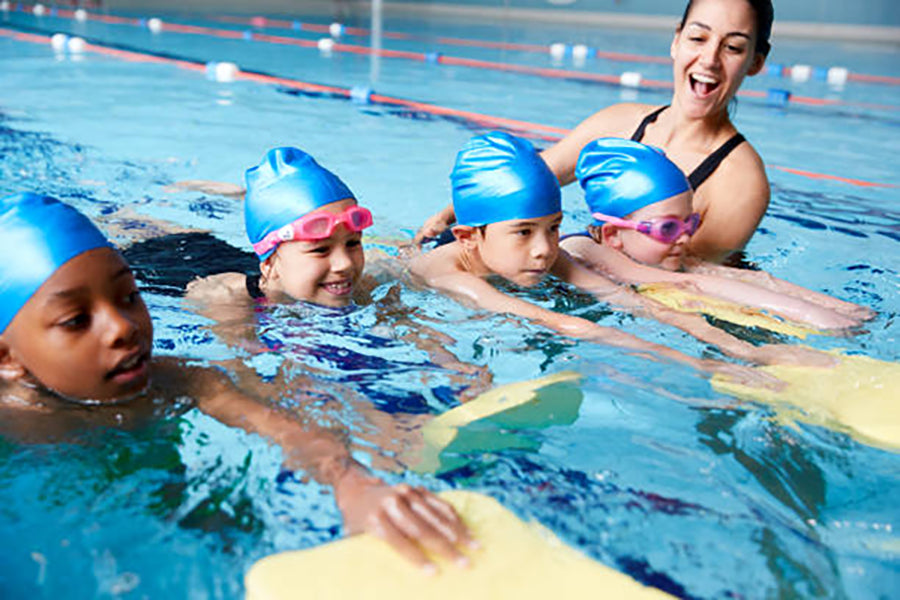What Swim Gear Does Your Child Need?
Let's dive deep into the world of kickboards, pull buoys, paddles, and fins to understand how each of these tools can enhance your child’s training regimen.

Kickboards
Kickboards are flat buoyant devices, often made of foam, that swimmers hold onto with their hands stretched out in front, keeping their upper bodies afloat.
Benefits:
- Focused leg training: With the upper body stabilized, swimmers can concentrate on refining their kick technique and building leg strength.
- Improved body positioning: Using a kickboard can help maintain a horizontal position in the water, crucial for efficient swimming.
- Breathing practice: It offers an excellent opportunity for swimmers to work on their breathing techniques, especially for those just starting.
Pull Buoys
Pull buoys are foam devices placed between a swimmer’s thighs or ankles, preventing the use of legs during a swim.
Benefits:
- Upper body workout: With the legs rendered immobile, pull buoys force swimmers to rely on their arms, shoulders, and core, strengthening these areas.
- Enhanced arm technique: Swimmers can focus on their pull pattern, catch phase, and overall arm technique.
- Improved buoyancy: They help maintain a horizontal body position, which can benefit swimmers who naturally have heavier legs.
Paddles
Paddles are flat, usually plastic, devices that swimmers wear over their hands, increasing resistance in the water.
Benefits:
- Increased strength: The added resistance helps to strengthen the arms and shoulders.
- Technique refinement: Feedback from the paddles makes it easier to notice flaws in hand entry, pull-through, and exit.
- Feel for the water: Paddles can enhance a swimmer's sensory awareness, helping them better understand water dynamics and improve their stroke efficiency.
Fins
Fins are foot devices that swimmers wear to increase their surface area, creating more propulsion.
Benefits:
- Speed boost: Fins allow swimmers to move faster in the water, providing a sensation of speed which can be motivating during training.
- Ankle flexibility: Regular fin use can help improve ankle flexibility, a crucial aspect of an efficient kick.
- Leg strength and technique: Fins provide resistance, helping to strengthen leg muscles. They also enable swimmers to focus on the up-kick, an often-neglected part of the flutter and dolphin kicks.
Integrating Equipment into Your Child’s Training
While each piece of equipment offers distinct benefits, it's essential to integrate them thoughtfully into your child’s training regimen:
- Variety: Rotate through the equipment to target different muscle groups and aspects of your technique. Avoid over-reliance on any single tool.
- Progressive Overload: Just as with weight training, progressively increase the time or distance for each piece of equipment to challenge body and promote growth.
- Feedback: Especially with tools like paddles, it's beneficial to have a coach or experienced swimmer provide feedback. They can point out technique flaws that the equipment might amplify.
Kickboards, pull buoys, paddles, and fins each offer unique advantages to swimmers of all levels. By understanding the purpose and benefits of each tool, you can tailor your child’s workouts to address specific areas of improvement, balance muscle development, and refine technique. As always, consult with a swim coach or trainer to ensure you have your child using these tools effectively and safely. With the right approach, these equipment pieces can be game-changers in enhancing their swim training regimen.
Watch our video on this topic at https://youtu.be/GdKu-MVIEWA?si=FJyXdKmk9GewKBXj
